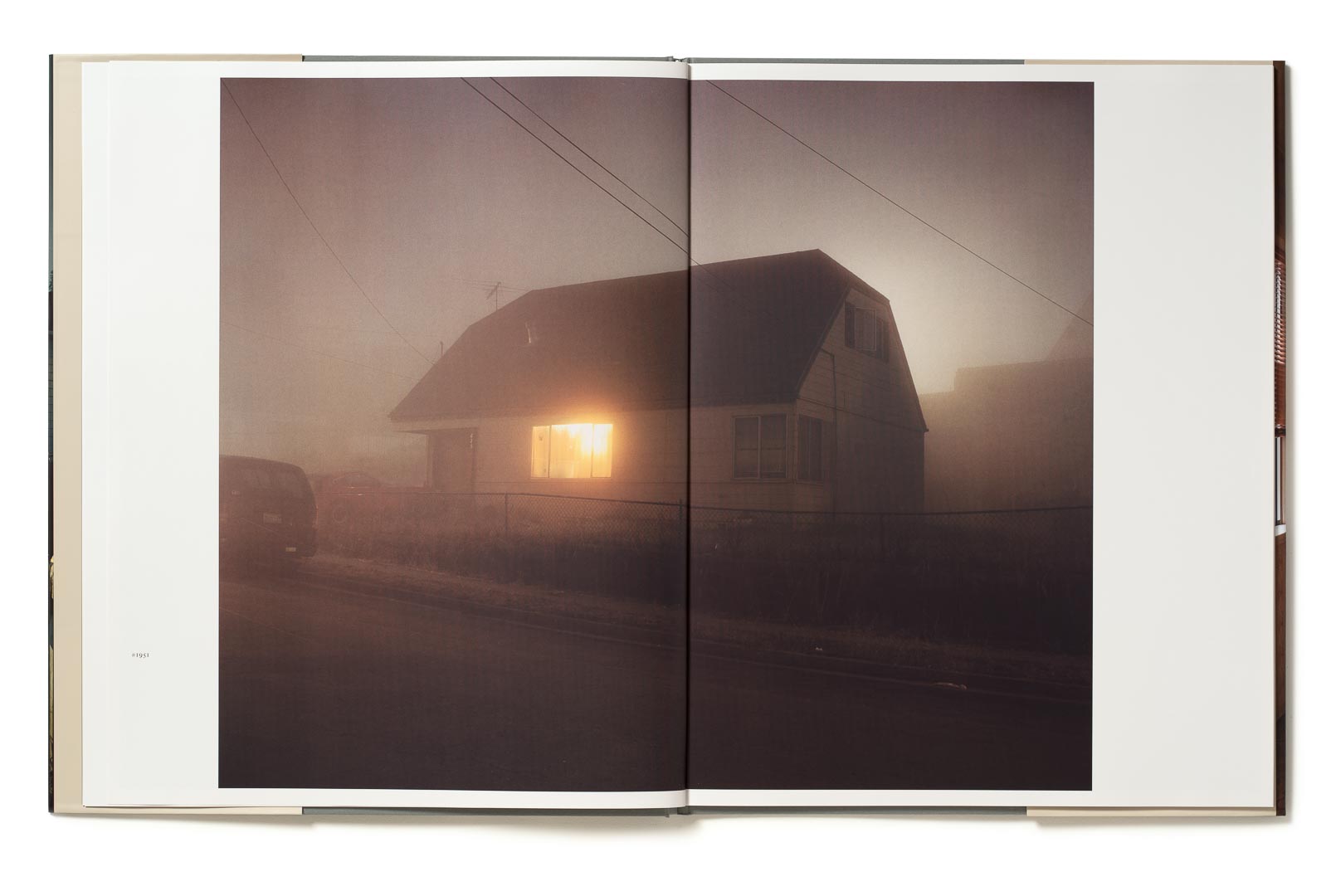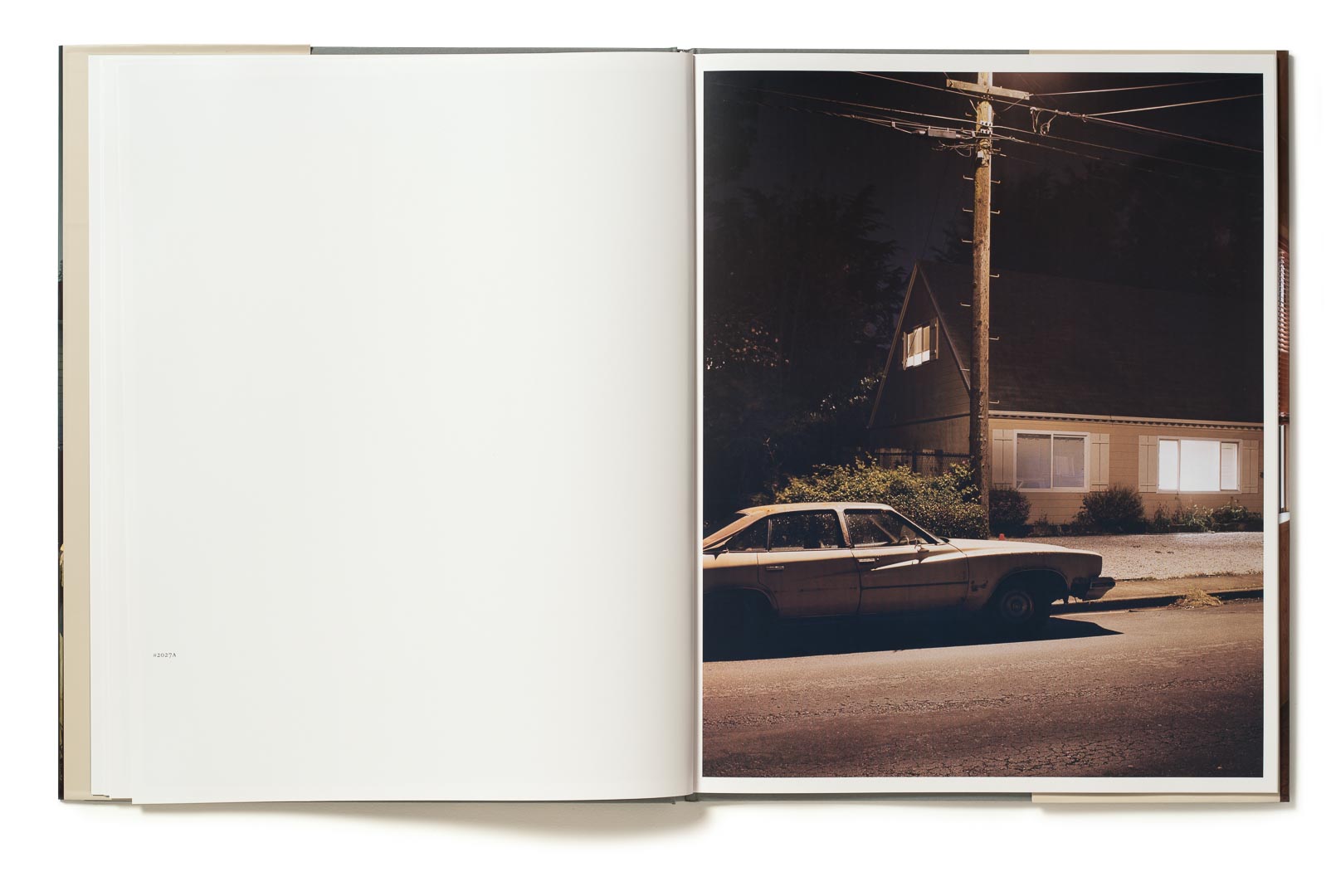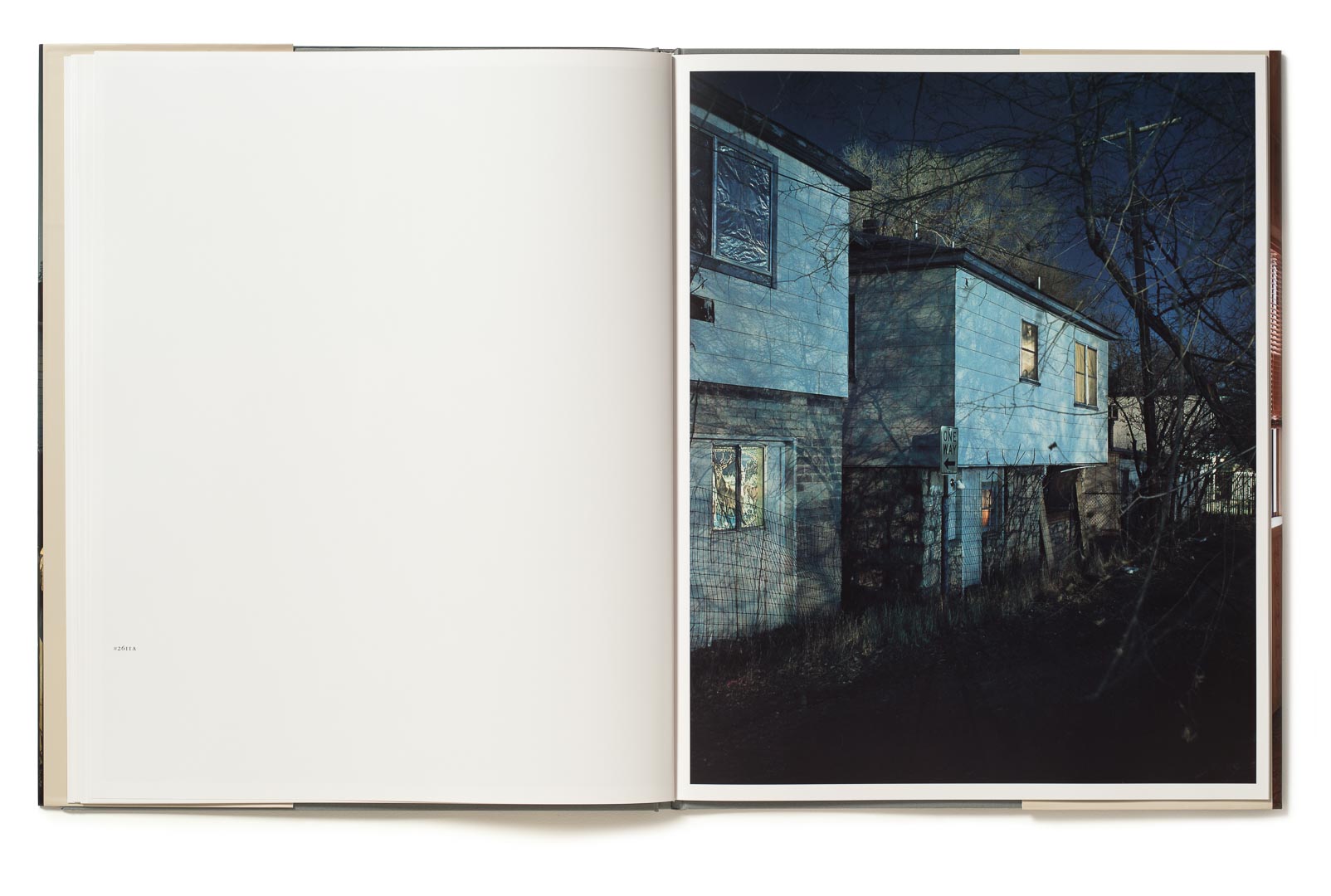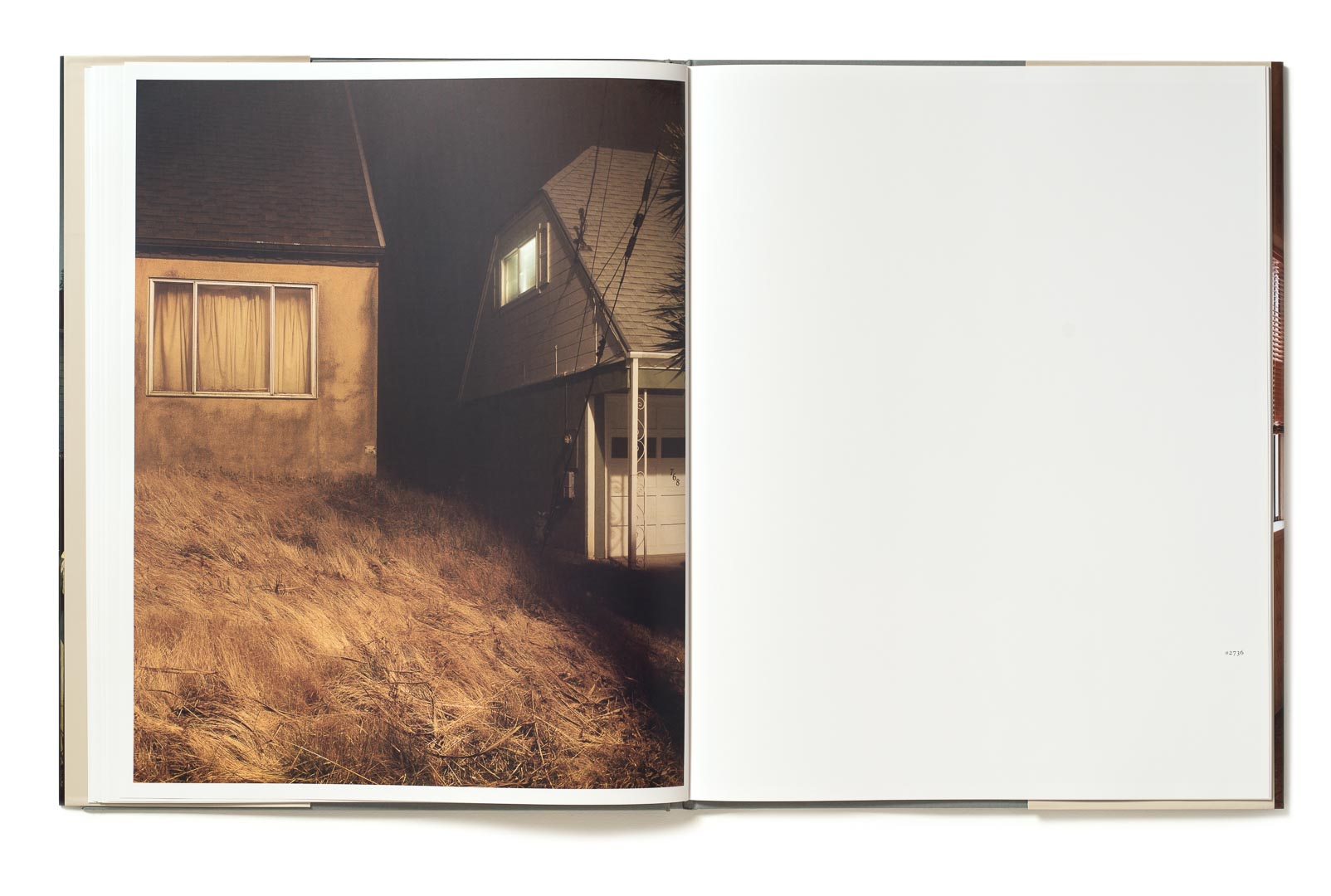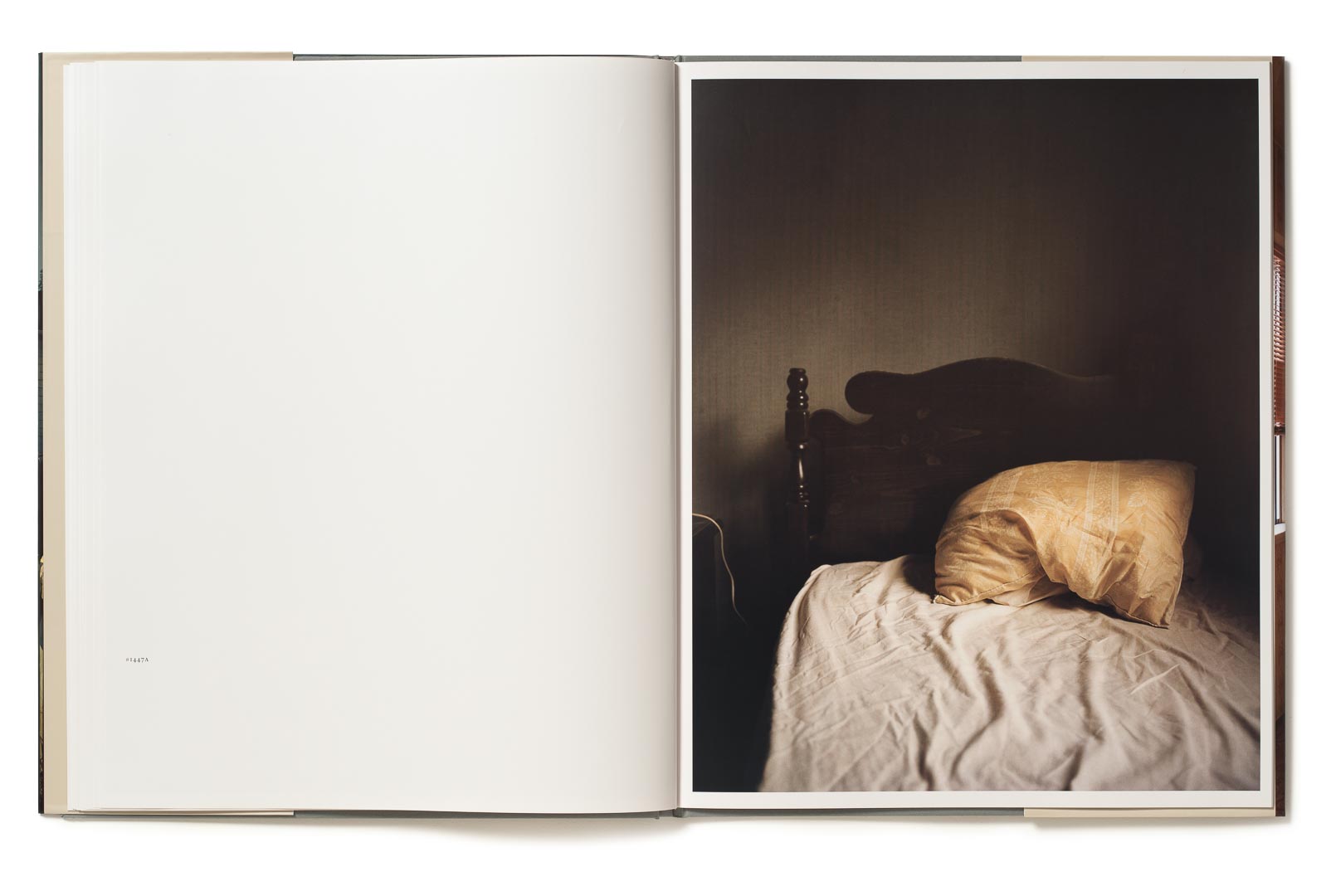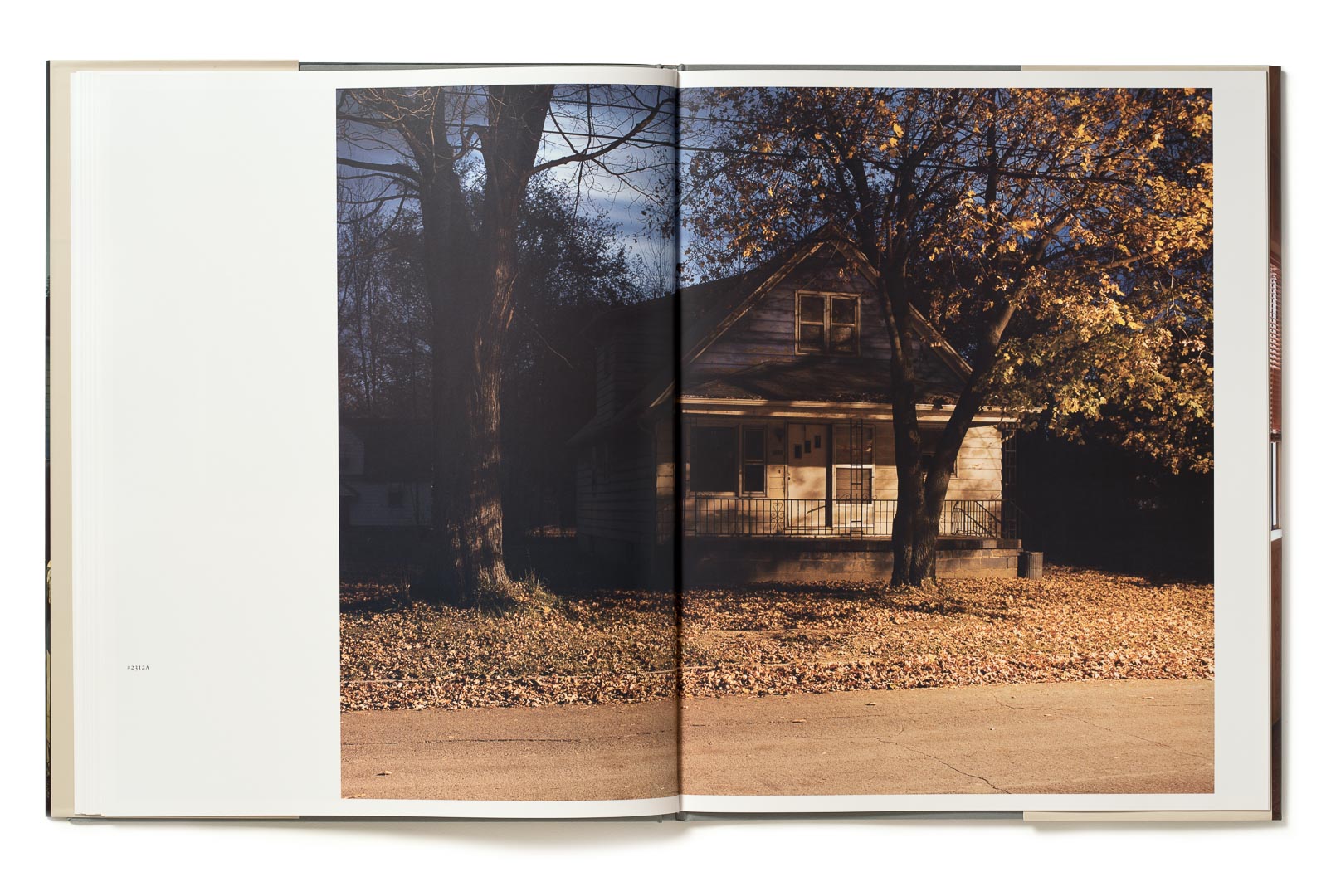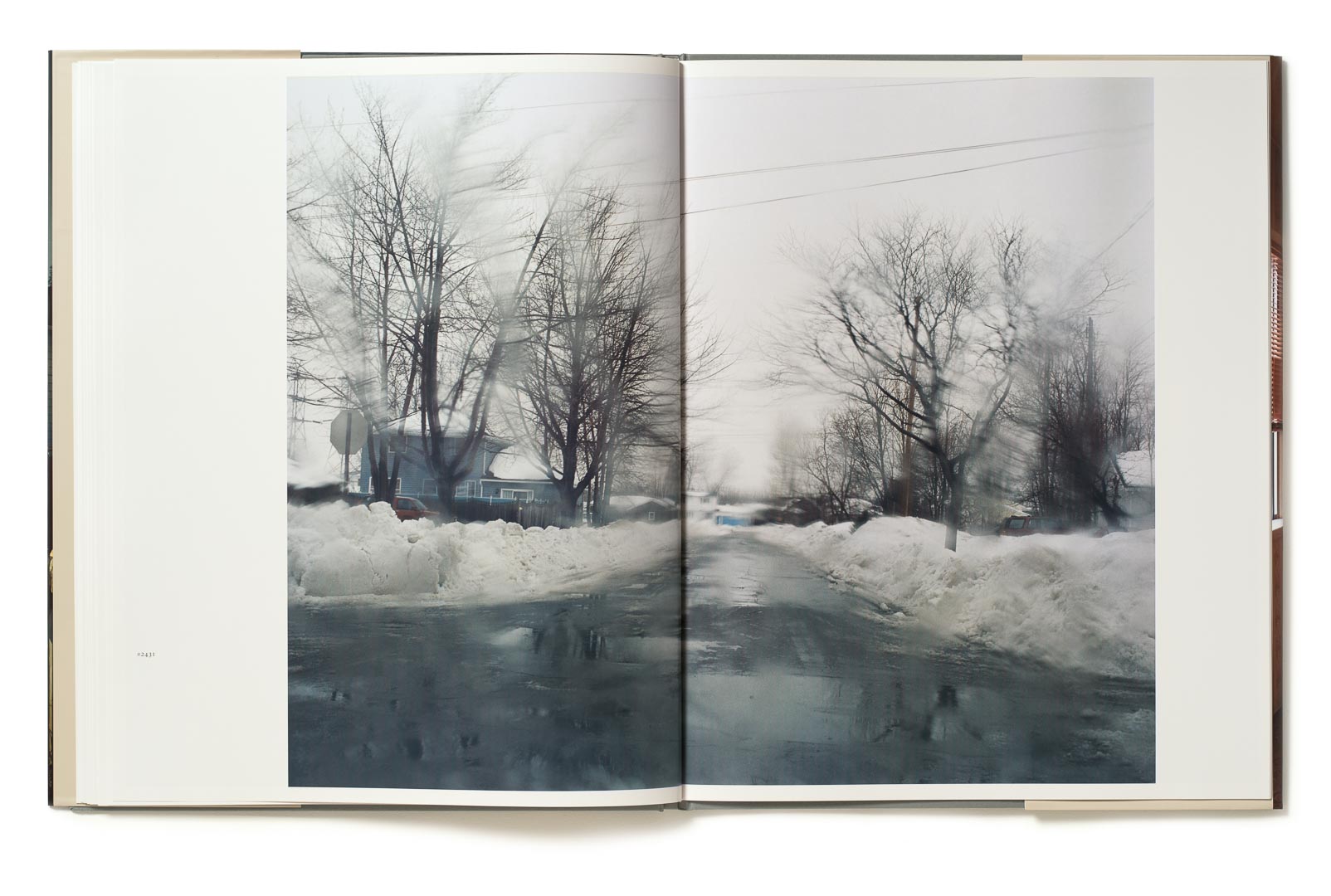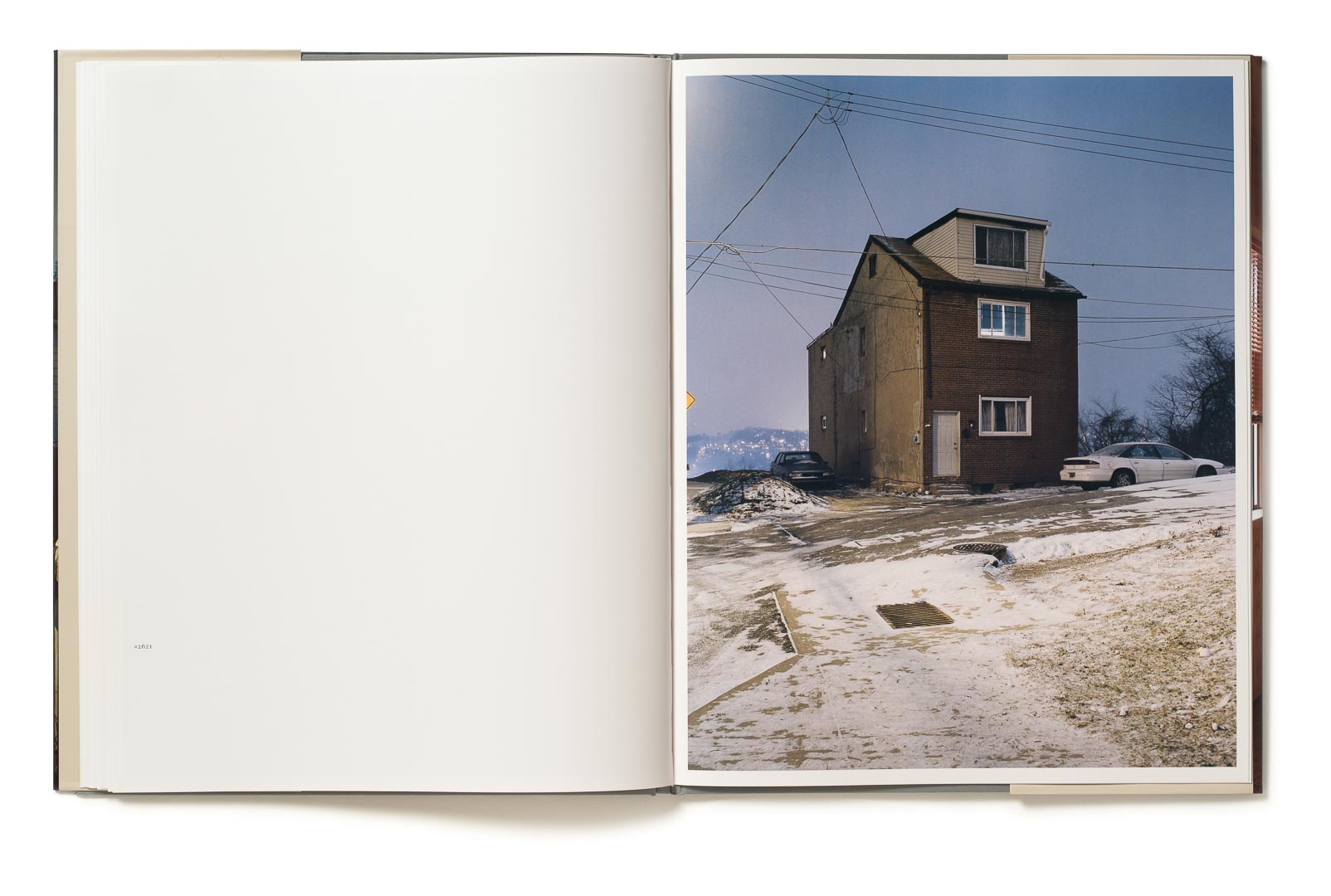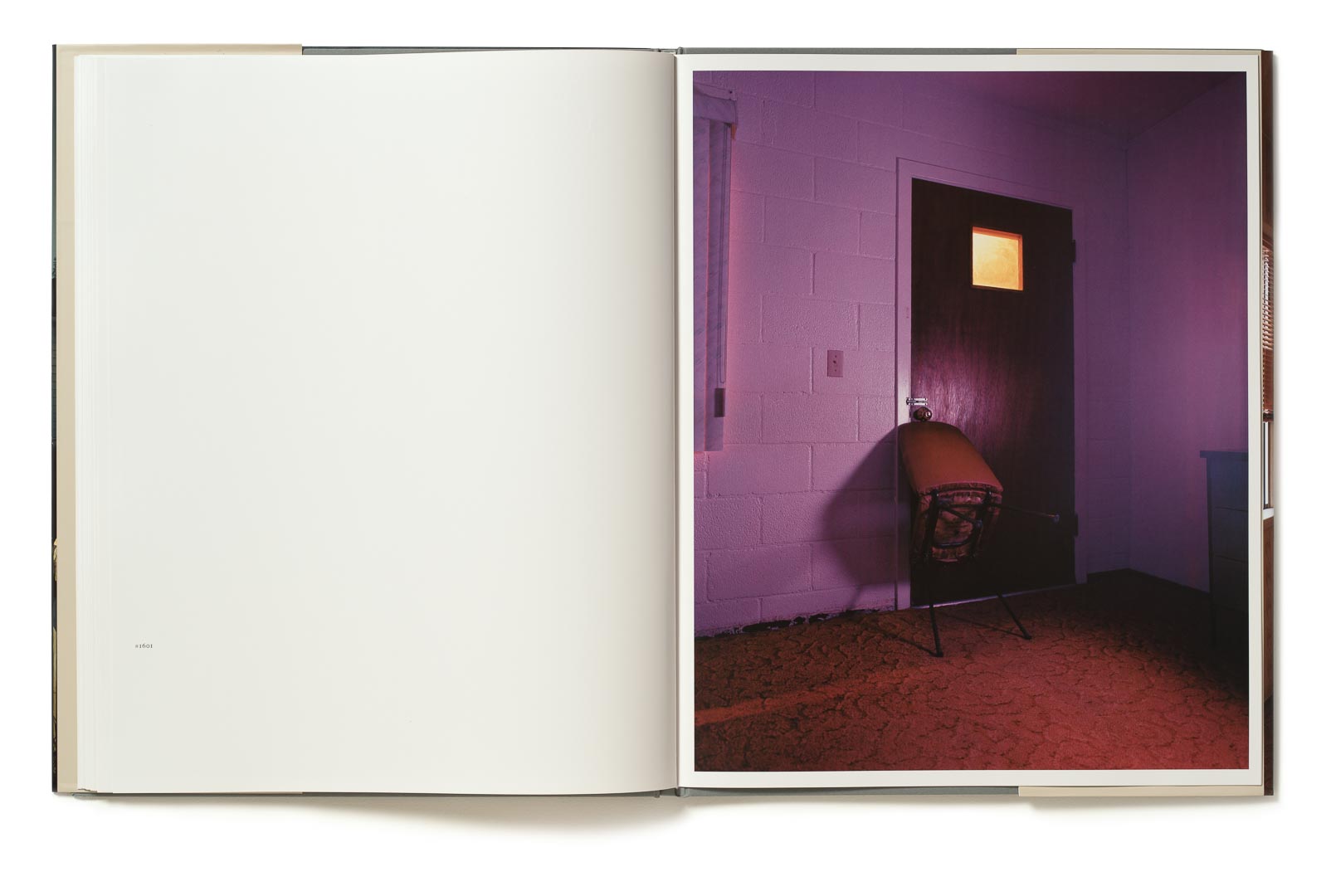House Hunting
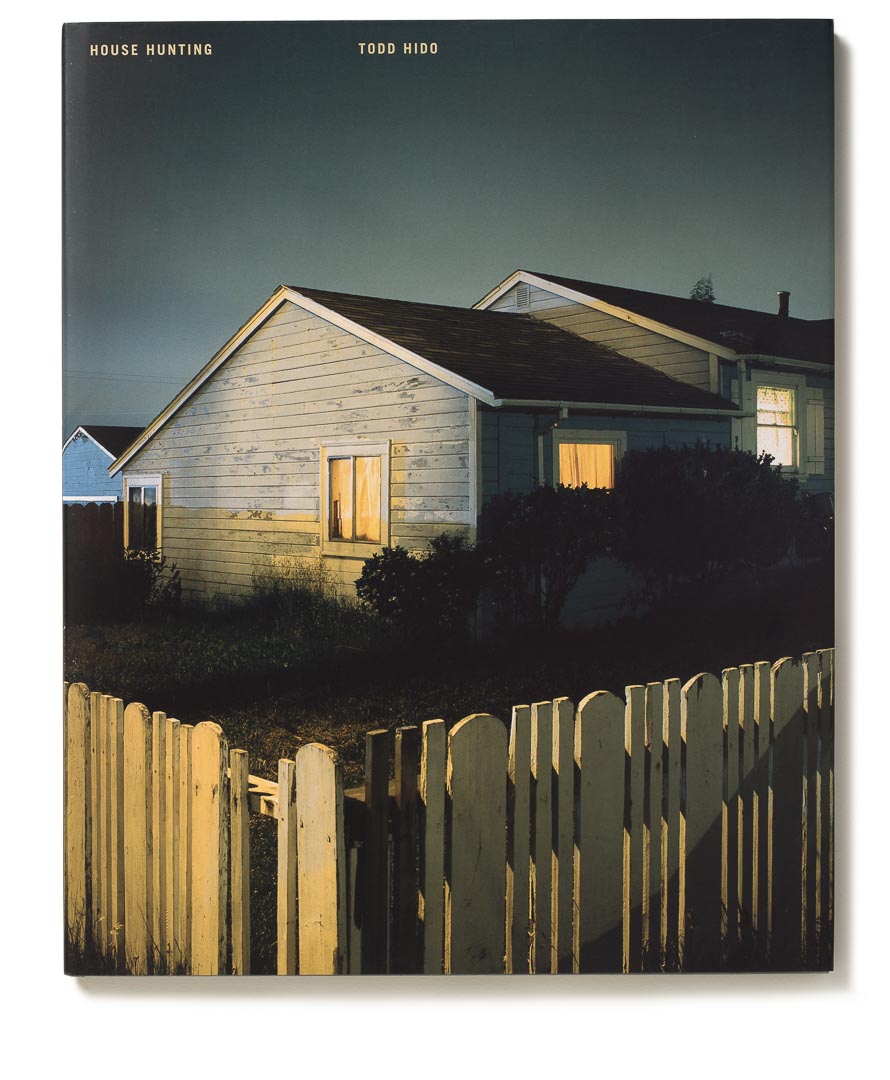
‘If you want to take a photo, you don’t knock on someone’s door to ask permission,’ Todd Hido says. I’ve tagged along on one of his drives, sitting shotgun as he pulls off of main roads to take the ‘unscenic’ routes, so to speak. It doesn’t matter the city we’re in, because he drives along the anonymous streets, choosing views that could be ‘anywhere’ in America, and, more importantly, ‘at any time.’ As always in his process, Hido is in search of something — ‘insatiable’ in that search, he says, ‘even if I can’t name exactly what I’m looking for.’
Published in 2001, House Hunting is, on the one hand, a portrait of a certain America at that specific moment in history: this is an economically downtrodden place, dark and empty homes with the dirty laundry barely packed, or homes with the lights on but radiating no warmth. Simultaneously, this is a portrait of America — and specifically, suburban America — from any contemporary post-war decade: a raw look at white paint chipping off of picket fences.
Hido’s work has echoes of the ’70s adolescence he spent in his hometown of Kent, Ohio, a city scarred by the 1970 shooting of four college students by the Ohio Army National Guard during a Vietnam War protest. Then again, the images resonate less for their relationship to the photographer and more for their ability to connect and identify with almost any viewer. These are reserved photographs, overwhelmed with emotion and history, but reluctant to say a word.
‘I take photographs of houses at night because I wonder about the families inside them,’ Hido tells me. ‘I wonder about how people live, and the act of taking that photograph is a meditation.’ House Hunting, therefore, is more question than answer. A rumination without resolution.
It would seem that in order for these pictures to exist, the photographer would need to be a voyeur, but Hido denies secrecy. He says he keeps himself obvious, even when shooting in the dark. When somebody calls the police, he is quick to make the distinction between photographer and criminal. ‘You’re allowed to take pictures in public,’ Hido says. ‘It’s interesting that so many people regard their surroundings as inherently private. Hido heightens that sense of false privacy. Amplifies it, to show the cracks in the edifices.
The scale of House Hunting, 17x13 inches (43x35 cm), initially gave the artist pause when proposed by the publisher. ‘I wasn’t sure about it. I didn’t want the book to end up crooked or shoved in someone’s bookshelf.’ Instead, the scale of the book demands a confrontation with its 26 carefully selected photographs, edited by Hido himself, a practice he insists on with each of his books. In so deliberately paring down the contents of House Hunting, Hido establishes how critical each photograph is in meaning and function. The physical experience of the photographs reinforces the emotional. In 2002, therefore, Outskirts was published as the companion book to House Hunting with the same size, shape, and page count.
Text by Katya Tylevich
